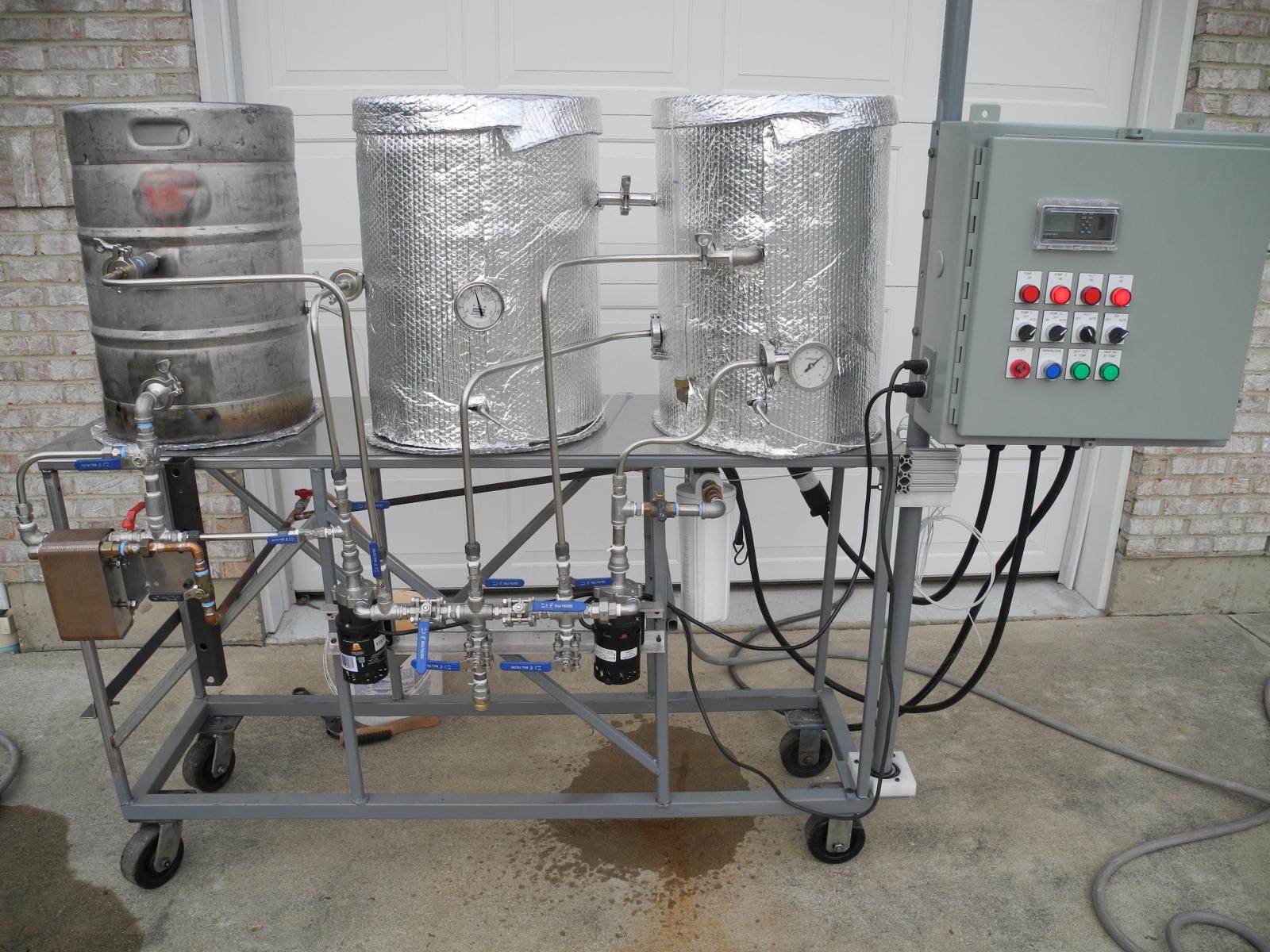The original post and many comments that followed have been most educational. This is my first post in the hope that conformation or suggestions might help this attempt be as good as those that have been shared in the past.
I have designed and constructed a HERMs with PLC control. I have been brewing for about 9 years, but only 1 year with this HERMs system. I have only brewed one Belgium in my past, a Chimay Grande Reserve--IPAs Stouts and Porters have been my preference.
I have made some changes to the original Westvleteren 12 Clone recipe, based on the threads that had made suggestions or improvements. My primary concern is fermentation. I can control temperature from 50 to 82 in a converted wine fridge.
The only change that came from outside was using four trappist yeasts instead of a starter.
MY recipe and plan:
(All calculations came from ProMash)
Recipe Type: All Grain
Yeast: WLP530 & Wyeast 3787
Yeast 530 Starter: 1.6L stir plate 1st pitch
Yeast 3787 Starter: 1.6L stir plate 2nd pitch day 3
Batch Size (Gallons): 5.5
Original Gravity: 1.100
Final Gravity: 1.012
IBU: 32
Boiling Time (Minutes): 60
Color: 38
Primary Fermentation 1st (Days @ Temp): 3 @ 65-68
Primary Fermentation 2nd: 7 @ 68-82
Additional Fermentation: 60 @ 50
Secondary Fermentation: 2 @ 65
Specifications
Batch Size: 5.50 gal
Boil Size: 7.25 gal
Estimated OG: 1.100 SG
Estimated FG: 1.012 SG
Estimated ABV: 11.4 %
Estimated Color: 38.8 SRM
Estimated IBU: 32 IBUs (Tinseth)
Brewhouse Efficiency: 80.00 %
Boil Time: 60 Minutes
Quantities
Total Grains: 14 lbs 15.4 oz
Total Hops: 3.00 oz
Mash Ingredients
8 lbs Pilsner (2 Row) Dingemans (2.0 SRM) Grain 47.2 %
4 lbs Pale Malt (2 Row) Dingemans (3.0 SRM) Grain 23.6 %
[[[[2 lbs D180 Candi Syrup (180.0 SRM) Sugar 11.8 % see BOIL]]]]
1 lbs 8.0 oz Caramunich Malt Dingemans (56.0 SRM) Grain 8.8 %
12.0 oz Biscuit Malt Dingemans (27.0 SRM) Grain 4.4 %
5.3 oz Aromatic Malt Dingemans (20.0 SRM) Grain 2 %
4.0 oz Special B Malt Dingemans (180.0 SRM) Grain 1.5 %
2.1 oz Chocolate Malt (350.0 SRM) Grain 0.8 %
Mash Steps
Mash In Add 20.94 qt of water at 149F 60 min 1.4 Qts per lbs.[my strike is 163]
Raise Mash Tun from 149 to 170 (10 min HERMs)
Fly sparge with 5.00 gal water at 170.0 F
Boil Ingredients
2 lbs D180 Candi Syrup (180.0 SRM) Sugar 11.8 %
1.00 oz Brewer's Gold [8.90 %] - Boil 60.0 min Hop 24.1 IBUs
1.00 oz Hersbrucher [4.2 %] - Boil 30.0 min Hop 4.2 IBUs
1.00 oz Styrian Goldings [2.8 %] - Boil 15.0 min Hop 3.8 IBUs
5.00 grams Wyeast Nutrient (Boil 5.0 mins)



































![Craft A Brew - Safale S-04 Dry Yeast - Fermentis - English Ale Dry Yeast - For English and American Ales and Hard Apple Ciders - Ingredients for Home Brewing - Beer Making Supplies - [1 Pack]](https://m.media-amazon.com/images/I/41fVGNh6JfL._SL500_.jpg)























 You must have used a substantial starter or yeast cake if using Trappist High Gravity yeast. That's a nice drop!
You must have used a substantial starter or yeast cake if using Trappist High Gravity yeast. That's a nice drop! 
